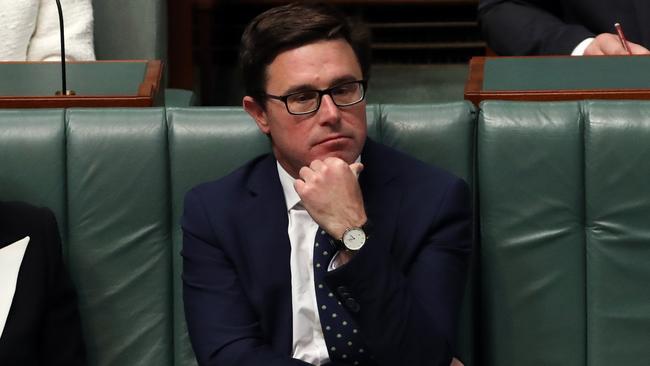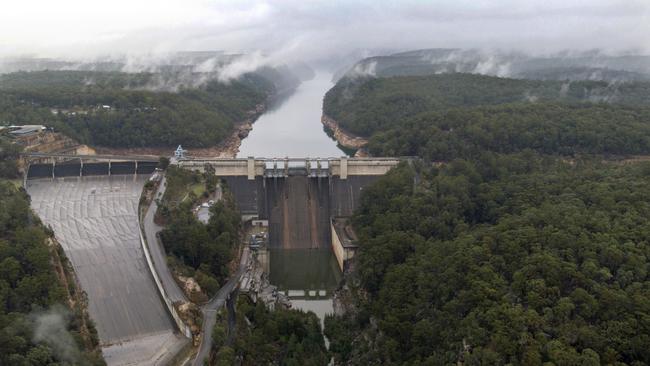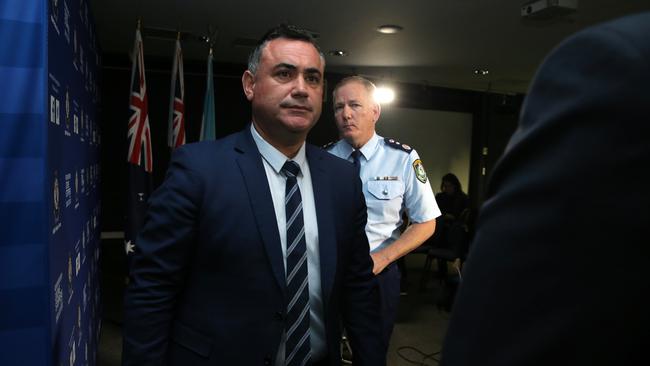Sydney’s water storage could drop 20 per cent by 2030 without new infrastructure
Australia can hold 25 per cent less water per person now than two decades ago as population growth outstrips new dam construction, prompting fears of a storage crisis.
Australia is facing a water storage crisis because states and territories have failed to build enough dams to match population growth.
Neglect and inaction has led to total water storage capacity per person falling by 25 per cent since 2000 as the nation’s population has grown from 19 million to 25 million.
Only 20 dams have been built nationally in the past 15 years and, of these, 16 were in Tasmania, the least populous state. Just one project, the Chaffey Dam upgrade, was completed in NSW during that time, with one dam built in the ACT and two in Queensland. Two major dams slated to supply Sydney and the Hunter — Welcome Reef and Tillegra — have been scrapped by the state government since 2002.

In Sydney, water storage capacity per person has dropped from 0.62 megalitres in 2000, to 0.48 megalitres this year and will drop a further 20 per cent by 2030 without action.
Federal Water Minister David Littleproud said despite creating a $1.3 billion National Water Infrastructure Development Fund in 2015, the Commonwealth has still had to drag states “kicking and screaming” to build new dams. Earlier this year the NSW government and NSW Water identified 10 water infrastructure priorities but The Daily Telegraph can reveal not one project has progressed beyond initial discussions with the Commonwealth about funding.
“If these states don’t start building dams, their water storage capacity will fall by up to 37 per cent by 2030,” Mr Littleproud said.
“Building dams will make sure we still have clean drinking water in regional towns and bring down the price of water to produce food.”

MORE NEWS
Public v private: How student-teacher ratios compare
Murder victim’s sister blasts Keneally for opposing migrant law
Reason for Hornsby brothel raid revealed
Mr Littleproud said the severity of the drought had exposed communities and the agriculture industry to state and territory inaction.
“The states have been responsible for urban water since Federation and should be taking the lead,” he said.
“I want to see bulldozers digging holes for new water storage as soon as possible.”
NSW Deputy Premier John Barilaro blamed bureaucratic red and green tape, not a lack of will, for stopping the construction of more dams across the state. As revealed yesterday in The Daily Telegraph, Mr Barilaro is preparing a Cabinet proposal to truncate environmental approvals to fast track dams.
“For too long we have accepted advice from bureaucrats who tell us we can’t build a dam because the economic or environmental costs are too great,” the NSW Nationals leader said.
“It is a gross fact that it would take less time to build a dam than do the paperwork. That has to change.”

Premier Gladys Berejiklian said yesterday she would support “any proposals which would further secure water security moving forward”.
“The Deputy Premier has indicated he wants to bring a proposal to Cabinet and I’m willing to look at that proposal,” she said. “I think what we need to do is look at it in the context of, if there are any specific proposals which will secure water for certain communities we’ll look at those on their merits.”
The state government is yet to make a significant dent in its $4.2 billion Snowy Hydro Legacy Fund — money specifically designed for major water infrastructure projects across the state.
About $650 million from the fund has been earmarked for raising the Wyangala Dam wall west of Sydney, of which $32 million will be spent investigating the project over the next three years.
A further $15.7 million has been allocated to business cases for four water infrastructure schemes, none of which appear on the state government’s list of 10 priority projects.
The priority projects include a $355 million new dam on the upper Mole River in the northwest, a $484 million dam at Dungowan near Tamworth and $335 million to raise the Brogo Dam and build a pipeline and hydro power on the south coast.
Major water infrastructure projects typically have long delivery times due to extensive planning requirements, taking between three to five years before they are shovel ready. An environmental-impact statement often requires two years of field studies before it can be finalised.
The Daily Telegraph asked NSW Environment Minister Matt Kean if there was scope to fast-track approvals for dams, but he did not respond.
A government spokesman said more than $800 million had been spent on water projects since 2017. “We will continue to appropriately assess and invest in projects to ensure our communities have the vital infrastructure needed to support sustainable water supply,” he said.
UPGRADES NEEDED TO SAVE OUR WATER SUPPLY
1. Macquarie: $16m
Managed aquifer recharge as part of Dubbo’s urban water supply
2. Lachlan: $33m
Lower Lachlan water efficiency options
3. Gwydir: $50m
Tareelaroi Weir Upgrade Cost
4. Border Rivers: $355m
New dam on the upper Mole River
5. Peel: $484m
New Dungowan Dam with augmentation of Dungowan pipeline
6. Murrumbidgee: $470m
Augment mid-Murrumbidgee storage at Bundidgerry
7. South Coast: $556m
Raise Brogo dam with new pipeline and hydropower
BETTING THE FARM ON A LEGAL FIGHT
A NSW farmer is selling his 42,000 hectare property so he can fund a legal war chest to fight state and federal authorities over the management of the Murray-Darling Basin.
Grazier Rob McBride plans to sell Wyoming Station, in the state’s west, to finance legal action over what he claims is the mismanagement of water from the Darling River and Menindee Lakes.
“We can either walk off the land, or make a stand and take action to fix this disaster,” Mr McBride said.
“From our perspective this isn’t about a drought, we’re talking about the destruction of the Darling River system and the collapse of farmers and sustainable irrigators here, and along the Murray and Murrumbidgee rivers.”
Mr McBride said he expects the property to fetch about $4 million when it goes under the hammer on September 20, some of which he will then use to fund legal action.
He plans to retain his two other properties Tolarno and Peppora Station.
“We are in the process of talking to (legal) counsels, a number of whom were on the South Australian Royal Commission on this issue, so we’re gaining their expertise and insight to effectively work out the best avenue and best government instruments to attack, for lack of a better word,” he said.
Mr McBride became a prominent figure in the fight to save the Darling when he and fellow landowner Dick Arnold filmed a video exposing the mass fish kills at Menindee last summer.
An estimated three million fish were believed to have been killed as the result of blue-green algae which drained the water of oxygen.
